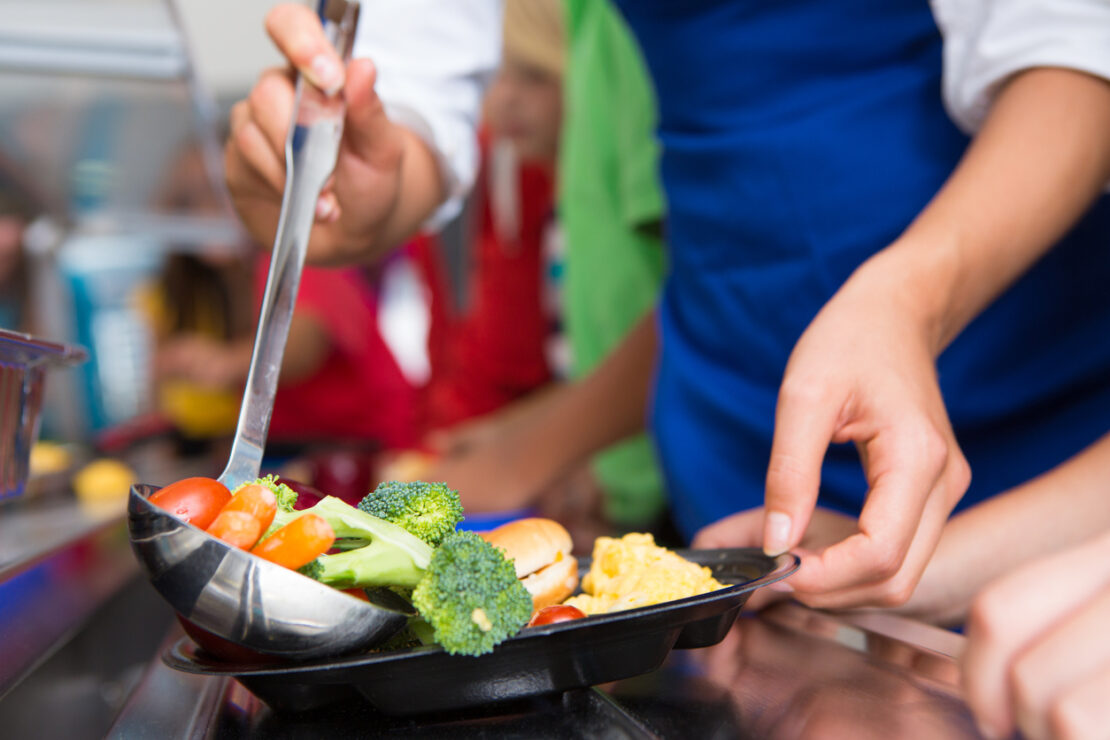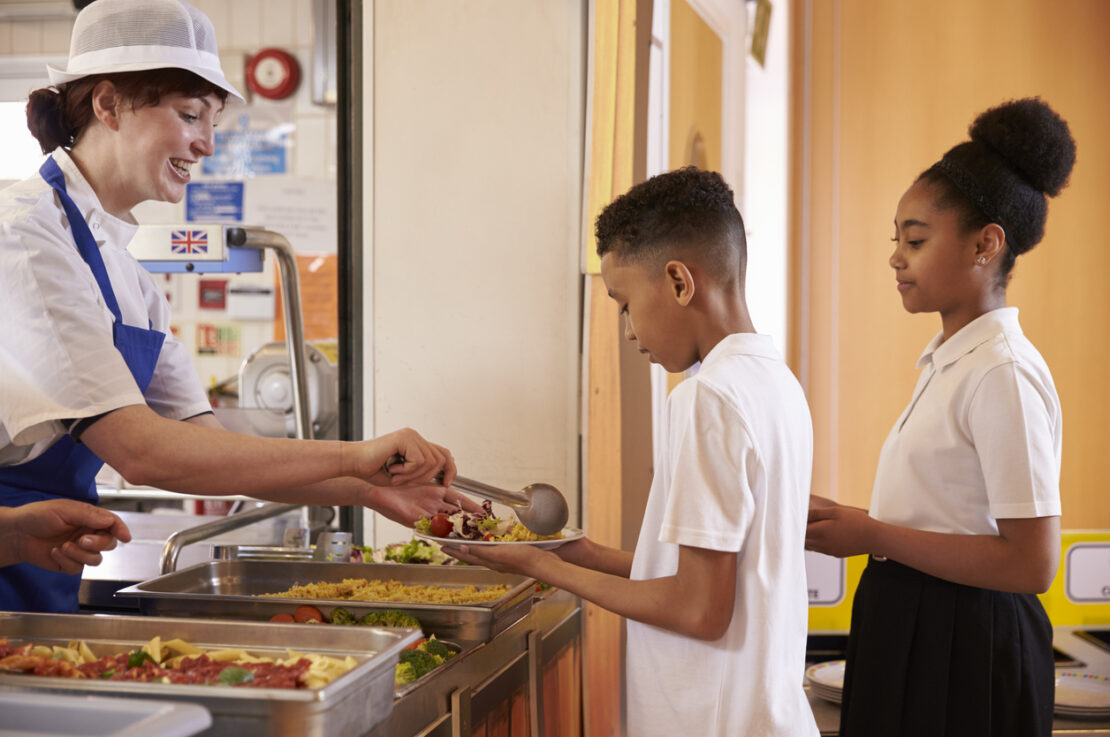Portioning food appropriately depending on who you’re catering for should always be factored into your catering plan. So, what’s the best way to handle portion sizes and ingredient decisions when you’re planning to serve food and drinks to young children and toddlers? Whether you’re managing a catering team within the education sector or you’re involved in procuring suitable ingredients for pre-packaged meals and snacks for children, we’ve got you covered.
Here, we’ll be explaining the ins and outs of the BNF 5-5-3-2 portion guide, including who it should be used for, the food categories in the framework and the major considerations caterers should be focusing on when using it.
What is the BNF 5-5-3-2 portion guide?
The 5-5-3-2 guide relates to the number of portions of each food group that children should be receiving each day, while BNF stands for the British Nutrition Foundation which created this guide. Young children between the ages of 1 and 4 should be following this diet supported by parents, caregivers and educators.
BNF 5-5-3-2 portion guide framework
The different numbers in the guide refer to the number of portions that children should be getting from each food group. Here, we’ll delve deeper into each of the four food categories, why it’s essential that children eat these types of food, the recommended serving size, and a few examples of foods and their measurements to help.
5-a-day starchy foods
At least one starchy food should be offered in each meal and at some snack times. Starch-based foods in the right portions can provide good amounts of energy, vitamins, minerals and fibre.
Fortified versions of starchy foods should be offered wherever possible to boost their nutritional value, and both wholewheat and white foods should be provided. However, sweetened versions of these foods should be largely avoided to keep sugar intake below the recommended amount.

Here are a few examples of starchy foods and their recommended serving sizes/measurements:
- ½ – 1 bread slice
- 2 – 5tbsp cooked pasta
- 5 – 8tbsp porridge
- 2 – 4 potato wedges
5-a-day fruit and vegetables
Most people already know that adults and children should be eating five portions of fruit and vegetables every day. But for caterers, it’s especially important to ensure that this food group is included in both meals and snacks given to young children and toddlers since this can boost their vitamin C and folic acid levels which help keep them healthy. Whether you include fresh, frozen, canned or dried varieties, these all count towards eating their five-a-day.
Below are a few examples of fruits and vegetables they can have alongside their recommended serving sizes/measurements:
- 1 – 3 cherry tomatoes
- 3 – 10 strawberries
- 2 – 6 carrot sticks
- ½ – 2tbsp cooked greens
3-a-day dairy products
Three portions of dairy should be provided for young children and toddlers each day as part of a healthy, balanced diet. Whole milk and yoghurt should be given to those under two, and children over this age can be offered semi-skimmed milk. Dairy is a crucial part of a child’s diet because these foods provide protein and essential nutrients such as calcium for healthy bones and teeth, and vitamin B for energy.
Here are some examples of dairy products that could be given to children:
- 3tbsp plain yoghurt
- 100 – 120ml cow’s milk, breastmilk or formula as a drink
- 2 – 4tbsp rice pudding
- 1 pot (120g) soya-based dessert (with calcium)

2-a-day protein
Caterers should serve two portions of protein a day unless the child is following a vegetarian or vegan diet. In this case, their protein portions should be increased to three a day to make sure they aren’t missing out on key nutrients. Fish should be served at least twice a week, and one of these servings should be oily fish such as salmon, sardines, mackerel, or trout. It’s also always recommended to limit the amount of processed meat given to young children, such as sausages or ham. Children must get enough iron to stay healthy, and good sources of iron for this age group include red meat, pulses, ground nuts or nut butters, and seeds.
Examples of protein-rich foods that should be included in a young child’s diet include:
- 2 – 4tbsp scrambled egg
- ½ – 1 slice beef
- 2 – 4tbsp baked beans
- ¼ – 1 small salmon fillet
Other foods to consider
Which other foods do caterers need to take into consideration when planning meals for toddlers and young children? From fatty and oily foods to special meals for different dietary requirements, here are a few other important food categories, why they should be included in your considerations and the recommended portion sizes.
Fats and oils
Although excessive fats and oils can be unhealthy, it’s still important to include some fat in children’s diets, which can come from sources like whole milk, full-fat dairy products, oily fish, spreads, and certain vegetable oils. Fats and oils provide essential fatty acids and fat-soluble vitamins which are crucial for children’s growth and development, so these should be included in moderate amounts. However, it’s advised that caterers limit the availability of higher-fat foods such as cakes, biscuits, and fried foods.
Alternative meals (vegetarian/vegan)
As long as a vegetarian diet is well-planned, it can be a healthy option for young children. However, it should be noted that protein foods must be increased to three portions rather than two to ensure they don’t lack any key nutrients provided by protein-rich meat such as iron and zinc.
Sugar
Where young children and toddlers are concerned, sugary foods should be kept to a minimum wherever possible. Sugary foods like biscuits, cakes, sweets, chocolate and drinks should only be given as a treat on rare occasions and shouldn’t become a regular part of children’s diets. This is because they can add a lot of unnecessary calories, alongside increasing the risk of tooth decay.

Salt
Foods high in salt should be limited and low-salt versions should be offered wherever possible. This includes foods such as crisps, breakfast cereals, baked beans and ready meals which usually have a higher salt content. Young children should consume no more than 2g of salt per day to help them maintain a healthy diet.
5 considerations for catering teams
What else do caterers need to think about when they’re providing food and drink for young children and toddlers? Below are the top five considerations for caterers dealing with everything from supply chains and procurement to meal planning and preparation.
- Caterers should avoid cutting out any of the recommended food groups unless there are allergies or other dietary requirements at play. The BNF suggests that unless a professional diagnosis of an allergy has been obtained, children should continue to receive the recommended portions as stated in their framework.
- Unnecessary salt should be avoided by substituting it with different spices or flavourings to create more interesting-tasting meals and snacks. Making food that doesn’t require salt to be added at the table is the goal.
- Caterers should do their best to create a good variety of foods since children’s preferences tend to change daily. However, familiar favourites should be kept on the menu or catering plan to maintain some routine.
- Meals and snacks should always be offered at regular times each day. This also helps create a routine for children and allows them to develop good eating habits.
- The quantity of salty foods provided each day should be limited to no more than 2g per day for children. This is something that caterers will need to monitor within their food and ingredient choices.

How much should toddlers and young children be drinking every day?
Making sure that toddlers and young children are staying hydrated is super important for maintaining their energy levels since children who lack this can become tired quicker. In some extreme cases, low hydration levels can also cause serious illness. Because of this, toddlers should be offered six to eight drinks per day or the equivalent of one litre. Water should be the main drink of toddlers and young children since it doesn’t include any added sugar, salt, fat or other additives.
Alternatively, milk can also be a good drink choice since it provides calcium and other important nutrients. Children aged between one and two should be given whole milk because this is a good source of vitamin A, while those eating well can be given semi-skimmed milk after two years. However, it’s important to note that skimmed or 1 percent milk isn’t a suitable main drink for children under five.
We hope this guide on the BNF 5-5-3-2 portion guide can help you create more effective and suitable meal and snack plans for toddlers and young children. For more advice and insights geared towards the catering industry, you can visit our blog.

